Contents
Guide

The Late Bronze and Early Iron Ages of Southern Canaan
Archaeology of the
Biblical Worlds

Edited by
Aren M. Maeir and Haim Goldfus
Volume 2
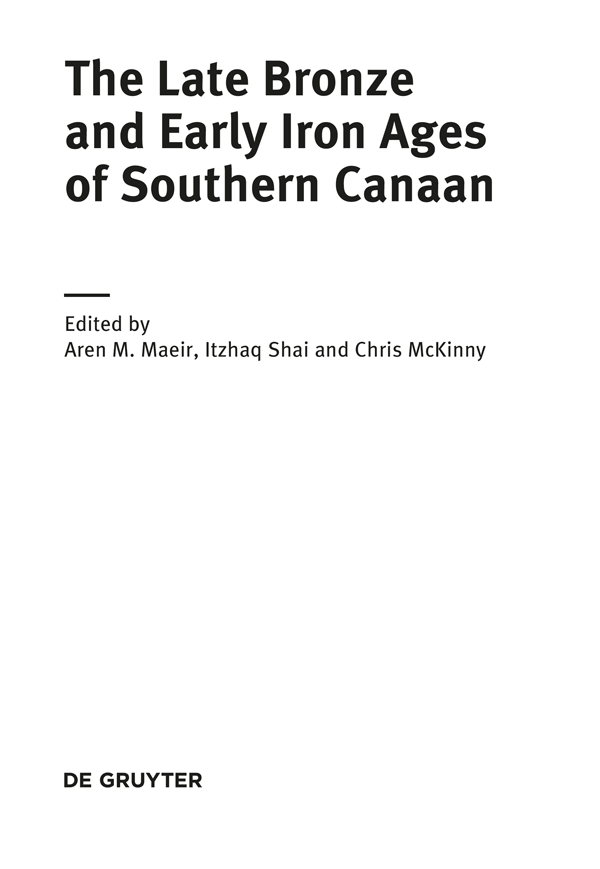
Advisory Board:
Benjamin Arubas, Hebrew University Jerusalem, Israel
Angelika Berlejung, University of Leipzig, Germany
Leah Di Segni, Hebrew University Jerusalem, Israel
Moshe Fisher, Tel Aviv University, Israel
Isaac Gilead, Ben-Gurion University of the Negev, Israel
Shuichi Hasegawa, Rikkyo University, Japan
Tom Levy, University of California, San Diego, USA
Steve Mason, University of Groningen, Netherlands
Ami Mazar, Hebrew University Jerusalem, Israel
Stefan Mnger, University of Berne, Switzerland
David Schloen, University of Chicago, USA
Bill Schneidewind, University of California, Los Angeles, USA
Wolfgang Zwickel, University of Mainz, Germany
ISBN 978-3-11-062670-4
e-ISBN (PDF) 978-3-11-062837-1
e-ISBN (EPUB) 978-3-11-062805-0
ISSN 2569-1910
Library of Congress Control Number: 2019933090
Bibliographic information published by the Deutsche Nationalbibliothek
The Deutsche Nationalbibliothek lists this publication in the Deutsche Nationalbibliografie; detailed bibliographic data are available in the Internet at http://dnb.dnb.de.
2019 Walter de Gruyter GmbH, Berlin/Boston
Photograph and image processing: Pavel Shargo, the Sonia and Marco Nadler Institute of Archaeology, Tel Aviv University. the Lautenschlaeger Azekah Expedition. Used with permission.
www.degruyter.com
Foreword
During the years 20142015, the Ackerman Family from South Africa, provided a generous donation to the Tell es-Safi/Gath Archaeological Project (directed by A.M.M.), on the basis of which the project was renamed the Ackerman Family Bar-Ilan University Expedition to Gath for that period. In addition to providing funding for the research activities of the project, the Ackerman Familys support included two other important aspects funding for stipends to college students from throughout the world (from 6 continents!) to join the excavation team, and a professional meeting dealing with biblical archaeology. And in fact, on Wednesday-Thursday, April 15th16th, 2015, the Ackerman Family Workshop in Biblical Archaeology took place, which included a first day of lectures at Bar-Ilan University (Fig. 1), followed by a field trip to archaeological sites in the Shephelah (Judean Foothills) and Philistia. Approximately 50 scholars from Israel and abroad participated in the workshop.

Fig. 1: Participants of the Ackerman Family workshop at Bar-Ilan University, April 15th, 2015.
The topic chosen for the workshop was the Late Bronze Age in Canaan and its vicinity. Recent excavations, particularly in southern Israel, but in other regions both in Israel and neighboring countries, have provided a wealth of new and exciting discoveries relating to the Late Bronze Age (ca. late 16th to early 12th centuries BCE). This workshop provided a unique opportunity to bring together a rather large group of scholars working on this period, including those currently active in relevant excavations and research, as well as those who had dealt with this period in the last decade or two. The 15 lectures presented on the first day, and the lively discussion that developed, both between the lectures and on the following day, demonstrated the vitality and ongoing developments on a broad range of issues relating to the Late Bronze of the Southern Levant.
In the current volume, there are 14 papers. Most of them are by those who presented at the original meeting. In addition to this, there are three invited papers (by Pfoh, Uziel et al., and Wimmer), whose topics nicely add to the general theme of this volume.
The volume opens with two papers on the Late Bronze Age remains at Tell es- Safi/Gath. Starting with a general overview by Maeir (co-editor of the volume) et al., on the LB remains at the site and how this can be understood against the background of LB Canaan, Frumin, Melamid and Weiss present a review of the archaeobotanical evidence from Tell es-Safi/Gath and other sites in the LB Shephelah, and their implications.
Following this is a chapter by Kleiman et al. on the LB remains from the relatively recent excavations at Tel Azekah, with important, and what might even be considered somewhat surprising finds. Of particular interest is the dramatic remains of the destruction of the Canaanite city of Azekah (whose name during the LB is not clear) during the mid/late-12th cent. BCE.
Ortiz and Wolff then present a timely summary of the LB remains from their excavations at Gezer, and in fact summarize the relevant results as their ten-year project winds down. This includes not only some very unique finds, but impressive remains of the destruction of the site towards the end of the LB, most probably at the hands of Pharaoh Merneptah.
Not only recent excavations are covered in this volume. Mazar and Panitz- Cohen present a retrospective of the LB remains found in the excavations at Tel Batash, which were both excavated and published in previous decades. These results, which provide an excellent sequence for the entire LB, are reviewed in light of more recent work on this period.
The recent excavations at Lachish, and the very interesting LB remains that were discovered, including an additional LB temple at the site, are described in the paper by Garfinkel et al. As Lachish is one of the foundational blocks for the discussion of the LB in Canaan, these are important results for any further discussion of the period.
Stephan Wimmer, whose paper was not included in the original meeting, presents another paper on Lachish, in which he reviews and discusses and interesting hieratic inscription and its interpretation.
The exceptional LB finds from Tel Burna are presented by Chris McKinny, Itzhaq Shai (co-editors of the volume), and Aharon Tavger. These remains, most probably representing a hitherto unknown temple from a site that had previously not been excavated and discussed regarding the LB period. This adds an important point on the map for this period.
Yet another invited paper, not included in the original meeting, is by Uziel, Szanton and Baruch. Here, they summarize the LB remains in Jerusalem, based on both earlier finds and those from more recent excavations, including those conducted by the authors. Needless to say, understanding Jerusalem during the LB is of importance, due to its mention in the el-Amarna correspondence.
The results of the American excavations by Hammond at Hebron, carried out in the 1960s, where never fully published, and Jeffrey Chadwick, who is currently in charge of their publication, presents an overview of the LB remains from the site. Giving that very little was previously known about Hebron during this period, this paper is of importance to anyone interested in the LB of Canaan.
Peter Fischers paper provides an overview of the Jordan Valley during the LB with a particular focus on Tell Abu el-Kharaz. He discusses the question of whether or not there was a substantial Egyptian presence in the region at the time.

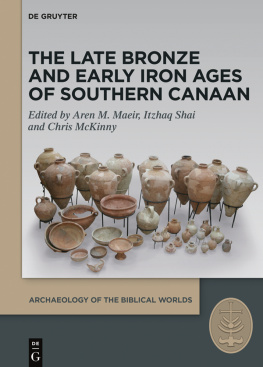


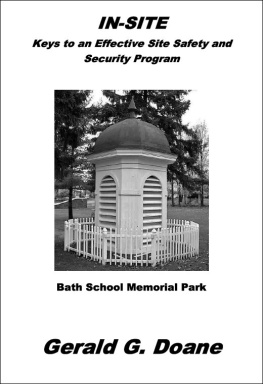

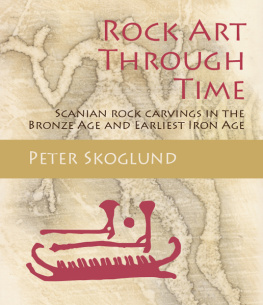

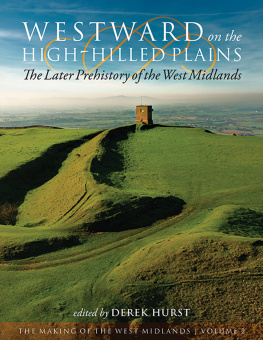
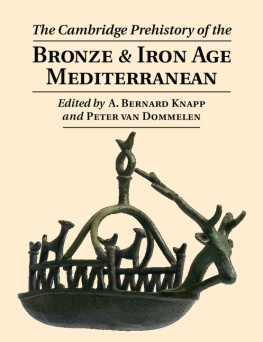
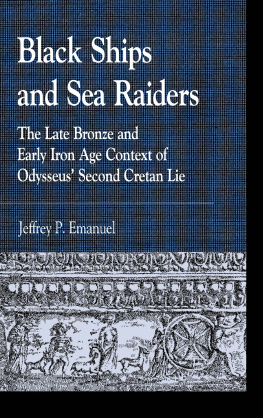



 Fig. 1: Participants of the Ackerman Family workshop at Bar-Ilan University, April 15th, 2015.
Fig. 1: Participants of the Ackerman Family workshop at Bar-Ilan University, April 15th, 2015.